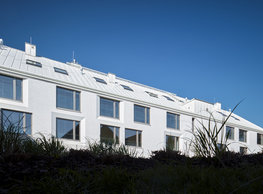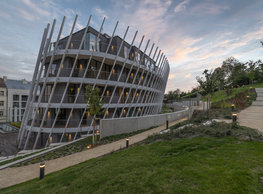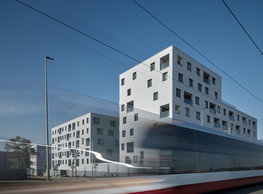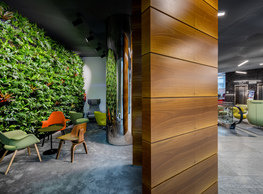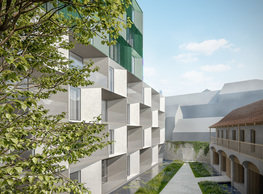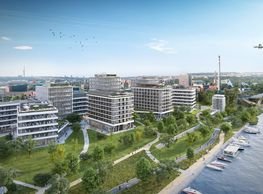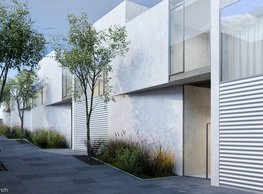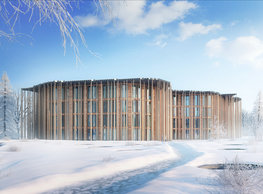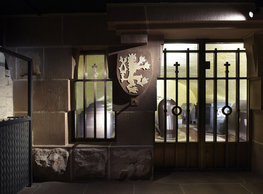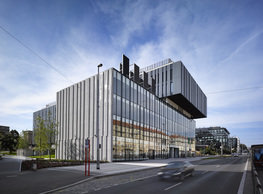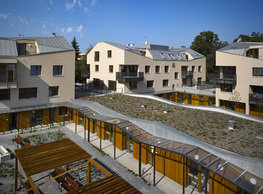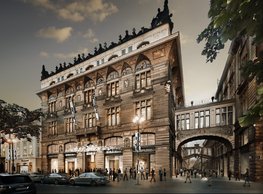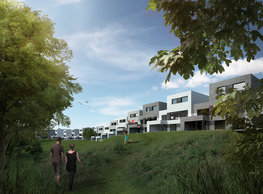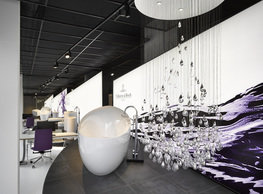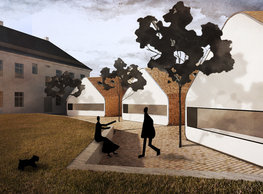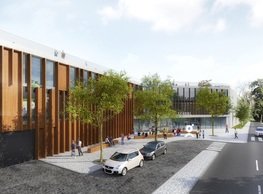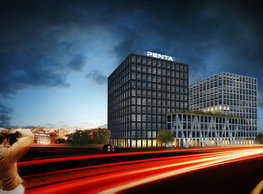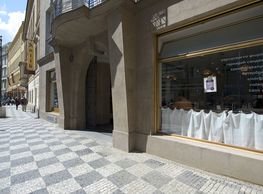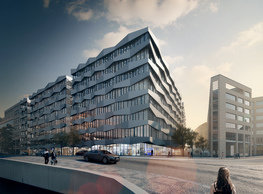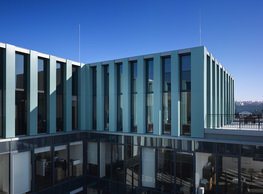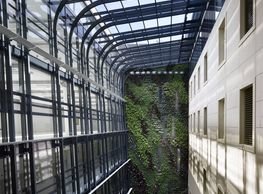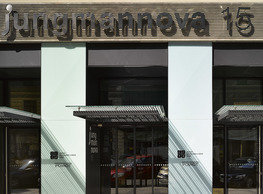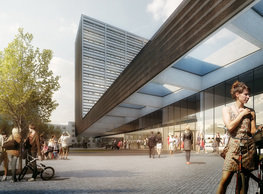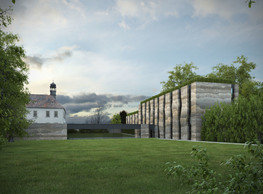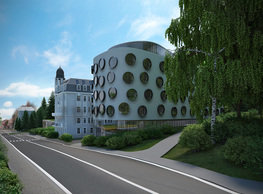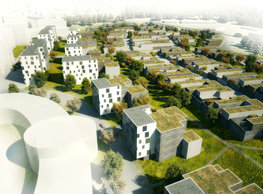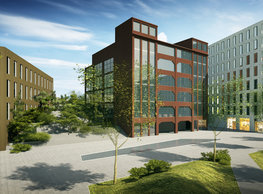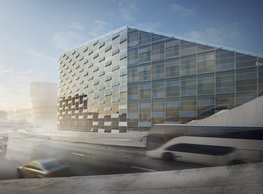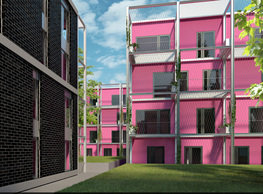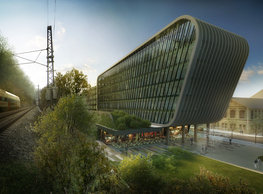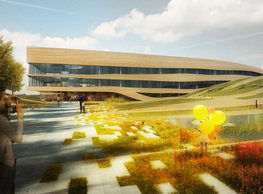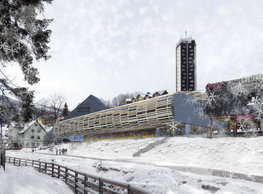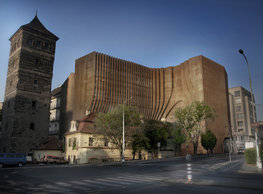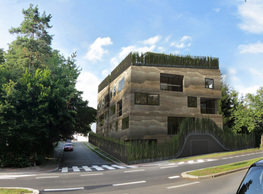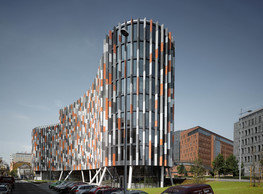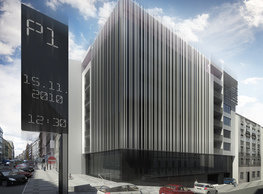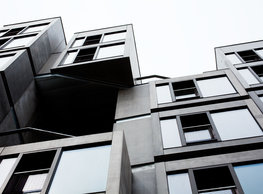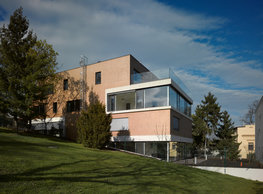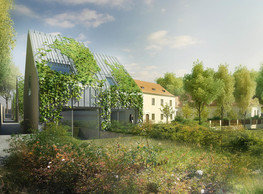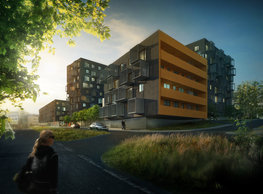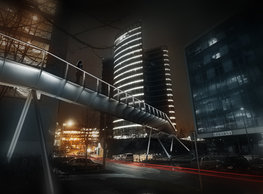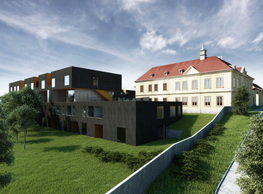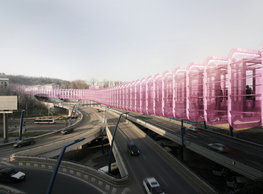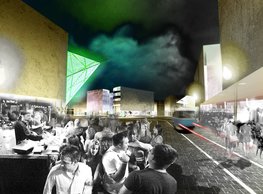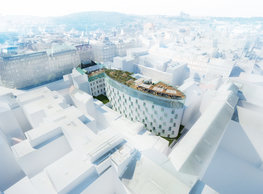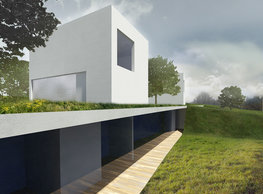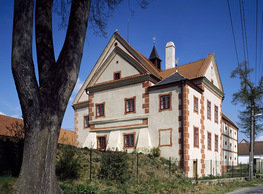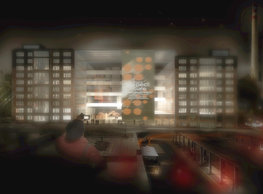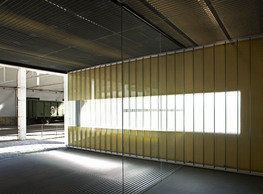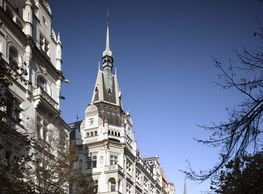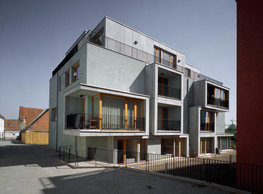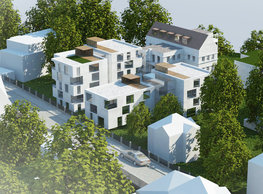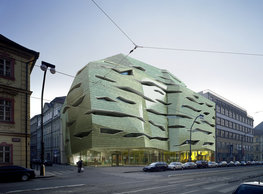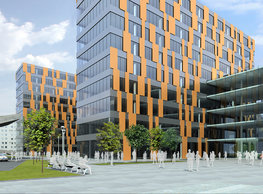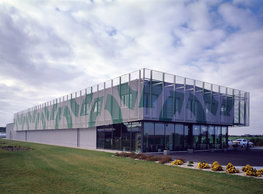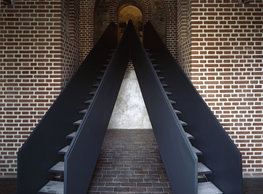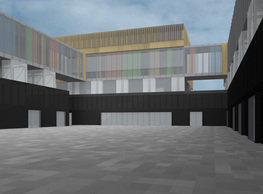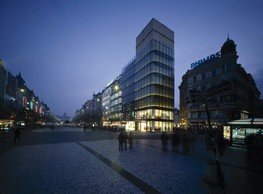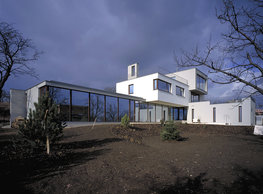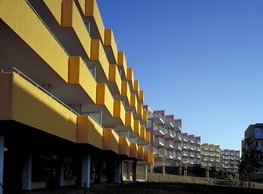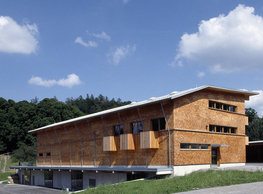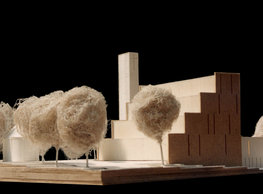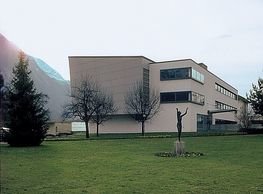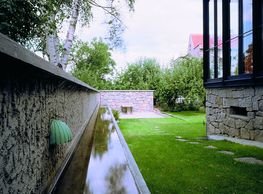The project is divided into three interconnected units, the implementation of which can be divided into two successive stages. The first unit, the new office building (with the working title Dynamica), which includes a traffic connection and the construction of a multifunctional staircase connected to the pedestrian footbridge, will be closely linked to the conversion of the former factory building M1 (with the working title Statica). This first phase will prepare the conditions for implementing the third unit, the new office building (with the working title Kinetica). The basic shape, i.e., its architectural form, is based on the concept mentioned above of the visual suppression of capacities of the building and the division of the scale into several blocks – towers. Different angles of outer walls contribute to the diminution and, at the same time, fragmentation of large façade areas resulting from the borders of the site and the need to define the areas around the buildings (the square, the area in front of the market, the corridor for the multi-function staircase, etc.). Rotated walls establish many planes when viewed from the outside, contributing to the elementary attractiveness of the building. The buildings are designed with a standard façade and regular fenestration because this is the simple shape of the buildings defining their architecture, not the commonly overestimated decorative detail. Although the new buildings come close to the appearance of the existing building by the rigid architecture and scale, they let it excel as an architectural and historical landmark. The overall design's important quality introduced into the square is peace and quiet; that is, the traffic pushed beyond the border of the given area and the concept of relations determining the directions of links between the pedestrian flows and individual spaces. The necessity to solve the entry onto the footbridge and outline the M1's front façade that is, however, far away beyond the border of the rectangular footprint of the core shape of the open space vigorously affects the footprint of the square (elongated rectangle). That is why the façade steps back to the line with the façade of M1 Bldg. in this part. The square is lengthwise divided into two zones. The more significant one is a park, a natural, simple screen between the houses and office buildings. Although larger in the area, it is the park, which seems less vibrant than the smaller paved area in front of M1, which will be perceived as 'the square'. The designed office buildings have one joint base – the underground car parking. There are approximately 750 parking places here and provisionally allocated areas for amenities and technologies. We design just one car entry, from the south from Klikatá Street, below the future multi-purpose staircase. In addition, we plan two alternatives to the car parking area. The one approximately respecting the footprint of the aboveground stories assumes that the substructure will consist of three and a half-basement stories. The larger alternative also occupying the space below the square assumes there will be two basement stories. Communal areas of entry receptions are on the ground floor connected to staircases and lifts. Those leading from the basement end here; those servicing the aboveground stories start here. Each of the planned buildings has two circulation cores. Resident canteens are behind the receptions. The remaining areas are allocated to rental and commercial areas. The main entrances are on the square from the north. The ground floor space below the multi-purpose outdoor staircase is assigned for the car entry and supplies. From the first floor up, there are just offices on each floor. Office stories are accessed through individual receptions on each floor from the central zones containing staircases, technical facilities, and restrooms. These areas can be divided into four independent units serviced by one central zone (containing a staircase, lifts, and toilets). Towers can be distinguished in floor plans starting on the third floor; joined stories substitute individual office stories with one circulation core.
portfolio
![]()
monastery of st. gabriel
![]()
nová zbrojovka block g
![]()
nad krocínkou a
![]()
nad krocínkou b
![]()
dobřichovice farmstead
![]()
nymburk train station
![]()
stará boleslav primary school
![]()
holečkova 26 residence
![]()
komořany elementary school
![]()
kindergarten jeseniova
![]()
nová elektra residence
![]()
filadelfie bldg. – the new reception
![]()
písnice elementary school
![]()
bytové domy vítězná/újezd
![]()
afi vokovice
![]()
showroom elite bath/bulthaup sk
![]()
port 7
![]()
main point pankrác
![]()
oktáva houses
![]()
lesy čr headquarters
![]()
royal tomb
![]()
the blox
![]()
dob centre in dobřichovice
![]()
contemporary glass muzeum
![]()
pod hády brno
![]()
elite bath showroom karlín
![]()
communal flats in dolní břežany
![]()
šantovka residence
![]()
open gate II
![]()
ružinov office building
![]()
dlouhá palace
![]()
vinohradská 8
![]()
masarykovo railway station
![]()
retail and office development
![]()
jindřišská 16
![]()
jungmannova 15
![]()
regina hradec králové
![]()
chateau dolní břežany
![]()
the metropole hotel in mariánské lázně (marienbad)
![]()
waltrovka
![]()
square mechanica
![]()
porto mercandini
![]()
plzeňská 18
![]()
vrchlického residence
![]()
karlín railway
![]()
science research centre
![]()
sněžka apartment house
![]()
novomlýnská brána
![]()
jeremenkova residence
![]()
main point karlin
![]()
flat b3 prague
![]()
štěpánská 47
![]()
tenement house with a gym
![]()
švédská residence
![]()
hendlův dvůr
![]()
klamovka residential complex
![]()
botanica vidoule phase 6
![]()
footbridge in bb centre
![]()
perníkářka manor
![]()
municipal interventions prague 2010
![]()
černá louka ostrava
![]()
evropa hotel
![]()
bb centrum filadelfie
![]()
family houses in radotín
![]()
cherubín II
![]()
fc bohemians praha 1905
![]()
ostrolovský újezd chateau
![]()
zlín cultural centre
![]()
znojemská hospice
![]()
pilsner urquell
![]()
st. wenceslas exposition
![]()
institute of noblewomen
![]()
karlov office building
![]()
cherub I
![]()
pařížská 9
![]()
jinonice villa park
![]()
petynka hotel
![]()
sanopz residential complex
![]()
viktoria center pankrác
![]()
hotel crystal palace
![]()
invalidovna offices
![]()
performing arts center seoul
![]()
boscolo carlo IV hotel
![]()
toner recycling company building
![]()
the story of prague castle
![]()
umprum in prague-ďáblice
![]()
mrázovka apartment villa
![]()
school gym in prague-troja
![]()
roma hotel
![]()
euro palace
![]()
ten centuries of architecture
![]()
villa třešňovka
![]()
velká skála
![]()
sternberg palace prague castle
![]()
st. nicholas church in čečovice
![]()
olga and václav havel's villa
![]()
tierpark langenberg
![]()
a church in neratovice
![]()
school centre interlaken
![]()
forestry school in lyss
![]()
villa dobeška
![]()
tuscany in maps




